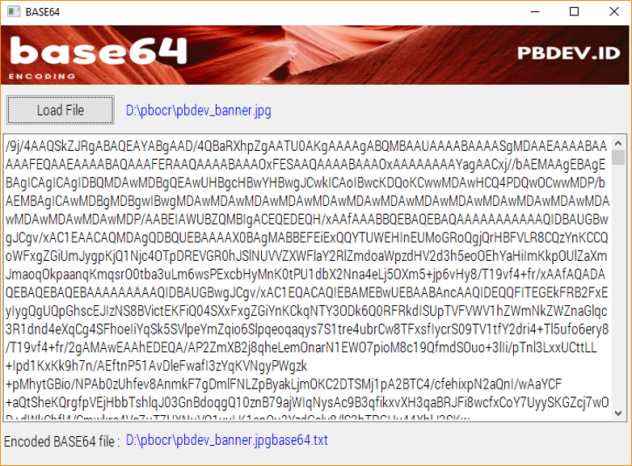
For example, an image file might be base64 encoded and included in an HTML file as text, or a base64 encoded certificate might be stored in a text configuration file. Here are a few more things about Base64 encoding −īase64 encoding is often used to represent binary data in a text format that can be easily transmitted over networks or stored in a text file. It is mainly used to encode data for transmission over networks or to store data in a text format. The characters used are A-Z, a-z, 0-9, +, and /.įor example, the letter 'A' in Base64 is represented as 'QQ=', and the word 'hello' is encoded as 'aGVsbG8='.īase64 encoding is not a secure way to encrypt data, because it can be easily decoded. There are 64 characters in the Base64 "alphabet", which is why it is called Base64. Each group is then represented by a printable ASCII character. To encode data in Base64, the data is first converted to binary data and then broken into groups of 6 bits.

It is often used for include small images in HTML, CSS, or JavaScript, or anything else text based. These services provide specialized security optimized for your diverse endpoint and cloud environments, which eliminate the cost and complexity of multiple point solutions.Base64 encoding is a way to represent binary data in ASCII text format.

Trend Cloud One™ - Endpoint Security and Workload Security protect endpoints, servers, and cloud workloads through unified visibility, management, and role-based access control. We will continue monitoring this group and their respective deployments for analysis, detection, and blocking. Over time, it included significantly damaging pieces of malware (such as Tsunami malware) in respective campaigns. In the group’s previous deployments, earlier scripts they used were simple, unable to evade detection, and were easy to analyze. Moreover, while it would also initially seem counterintuitive to use a six-year-old security gap in an attack, the malicious actor’s scanning activity could have shown systems still vulnerable to the exploit.Ĭonsidering these developments, we find 8220 Gang as a threat to be reckoned with despite other researchers describing them as “low-level script kiddies,” and that organizations still have to work on catching up when it comes to updating their security systems.
#Purpose of base64 encoding windows
Despite reusing old tools and C&C servers, the gang has started targeting Windows systems, and using new file and C&C servers to evade previous detections. Considering the threat actor’s tendency to reuse tools for different campaigns and abuse legitimate tools as part of the arsenal, organizations’ security teams might be challenged to find other detection and blocking solutions to fend off attacks that abuse this utility.Ībuse of lwp-download might be expected in the short term for compromise and targeting of other platforms. Lwp-download is a Linux utility present in a number of platforms by default, and 8220 Gang making this a part of any malware routine can affect a number of services even if it were reused more than once. This allows attackers to gain unauthorised access to sensitive data or compromise the entire system. This vulnerability, with a CVSS score of 7.4, impacts the WLS Security Component of Oracle WebLogic, and when exploited can enable attackers to execute arbitrary commands through an HTTP request remotely with a specifically crafted XML document. This article explores a recent attack observed exploiting the Oracle WebLogic vulnerability CVE-2017-3506 captured by one of our honeypots. Looking at other researchers’ documentation on the gang’s recent activities, it appears as if the threat actor has been active in recent months.


The group was documented to have used Tsunami malware, XMRIG cryptominer, masscan, and spirit, among other tools in their campaigns. Researchers have documented this group targeting Oracle WebLogic, Apache Log4j, Atlassian Confluence vulnerabilities, and misconfigured Docker containers to deploy cryptocurrency miners in both Linux and Microsoft Windows hosts. 8220 Gang (also known as “8220 Mining Group,” derived from their use of port 8220 for command and control or C&C communications exchange) has been active since 2017 and continues to scan for vulnerable applications in cloud and container environments.


 0 kommentar(er)
0 kommentar(er)
